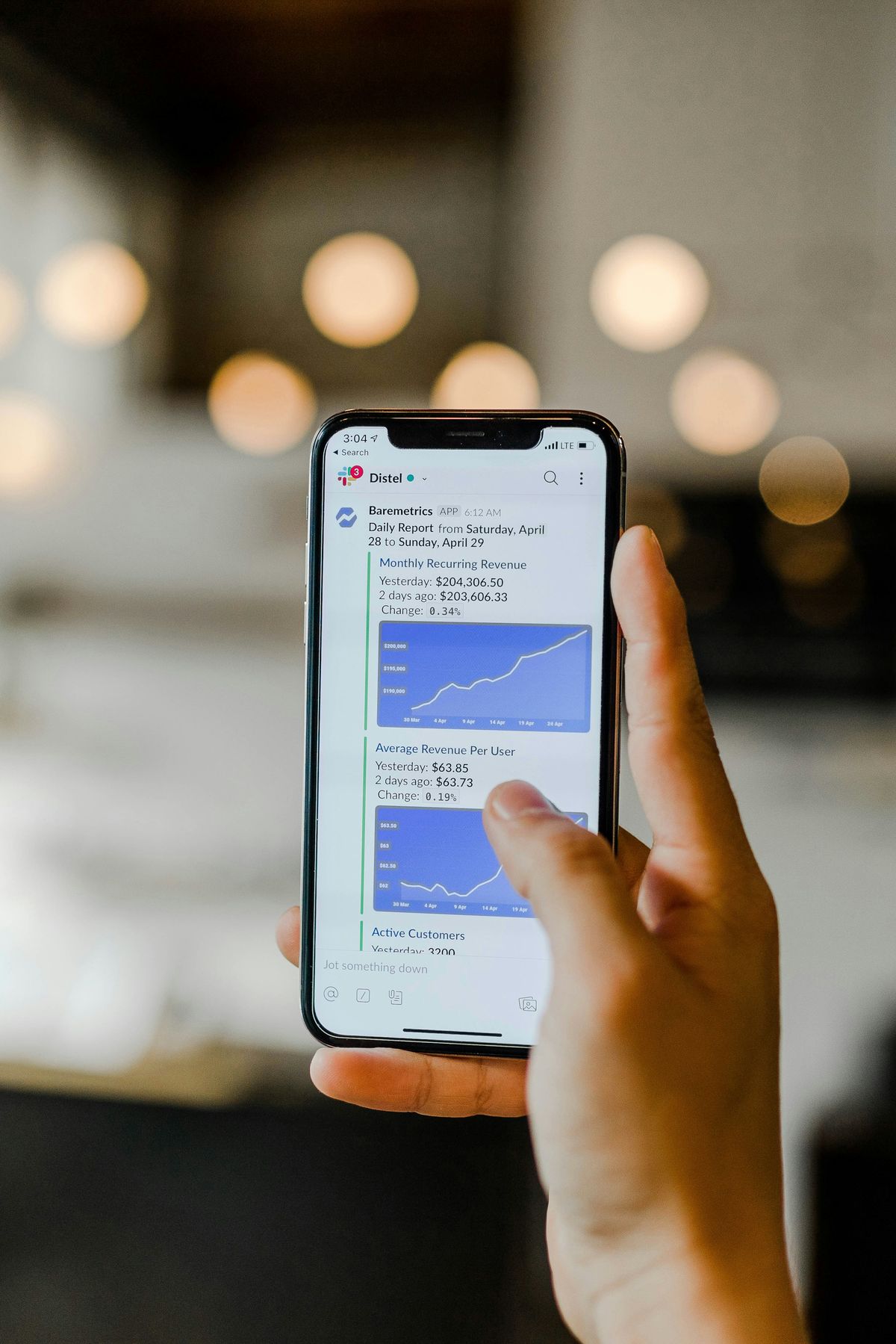Understanding the Basics of Web Analytics
In the digital age, understanding your online presence is crucial. Web analytics provides the key to this understanding.
Web analytics is a powerful tool. It helps businesses measure, collect, and analyze web data. This data is then used to understand and optimize web usage.
But what does this mean for you?
Whether you're a business owner, a marketing professional, or a website manager, web analytics can help you improve your website's performance. It can provide insights into user behavior, traffic sources, and much more.
This guide will delve into the basics of web analytics. It will also touch upon the benefits of web analytics consulting services and what to look for in a consultant.

Join us as we explore the world of web analytics. Let's start our journey towards data-driven decision making.
The Importance of Web Analytics #
Understanding the role of web analytics is crucial for every business. It turns raw data into valuable insights. These insights drive effective decision-making.
Web analytics offers a clear view of your website’s performance. By analyzing metrics such as traffic sources, pageviews, and user behavior, businesses can gauge how well their digital strategies are working. This feedback loop is vital for continuous improvement.
One of the main benefits of web analytics is enhancing the user experience. With detailed data on how users interact with your site, you can make informed changes. Improvements could range from streamlining navigation to optimizing content for better engagement.
Some key benefits of web analytics include:
- Understanding user demographics and behavior
- Improving conversion rates through targeted optimization
- Identifying top-performing content and pages
- Tracking the effectiveness of marketing campaigns

In conclusion, web analytics helps businesses to not only analyze the present but also shape the future. By leveraging these tools, you can stay ahead in a competitive online landscape. Investing time in understanding analytics can lead to significant long-term benefits.
Defining Web Analytics and Its Purpose #
Web analytics revolves around collecting, measuring, and analyzing web data. Its purpose is to understand and optimize web usage. This process involves tracking user interactions across a website.
The primary aim of web analytics is to improve website performance. It helps identify what's working and what needs improvement. By doing so, it turns data into actionable insights that guide strategic changes.
Another key purpose of web analytics is enhancing marketing efforts. By analyzing user behavior and engagement, businesses can tailor their content and marketing strategies. This leads to better alignment with customer needs and preferences. Ultimately, it fosters more effective marketing campaigns and boosts return on investment.
Key Web Analytics Metrics Explained #
Understanding key metrics is vital in web analytics. These metrics provide insight into how users interact with a website. Analyzing them helps in refining marketing strategies and enhancing user experience.
Two crucial metrics are bounce rate and session duration. Bounce rate measures the percentage of visitors who leave the site after viewing one page. It indicates whether the content meets users' expectations. Session duration reveals how long visitors spend on the site. Longer sessions usually suggest engaging content or effective navigation.
Metrics are often grouped into categories:
-
Traffic Metrics
- Pageviews
- Sessions
- Traffic Sources
-
Engagement Metrics
- Bounce Rate
- Session Duration
By focusing on these metrics, businesses can track performance and adjust strategies accordingly.

Pageviews and Unique Pageviews #
Pageviews count the total number of times all pages on a website are viewed. This metric helps identify popular pages and trends over time.
Unique pageviews measure how many sessions include a particular page. They eliminate repeat views from the same session. This metric gives a clearer picture of a page's reach.
Combining these insights, businesses can identify which content draws interest and drives traffic.
Sessions and New vs. Returning Visitors #
Sessions track a user's interactions during a single visit to a site. It starts when a user arrives and ends after inactivity or exit. Session data helps in understanding visitor behavior per visit.
New and returning visitors offer insights into audience loyalty and reach. New visitors show how many first-time users visit. Returning visitors indicate visitor retention and interest. Differentiating between the two helps tailor marketing efforts.
Traffic Sources and Their Significance #
Traffic sources indicate where site visits originate. They can be direct, referral, social, or organic search. Each source reveals different insights into user behavior.
Direct traffic comes from users entering the URL directly. Referral traffic comes from external websites. Social traffic refers to visits from social media platforms. Understanding these sources allows for targeted marketing initiatives.
Analyzing traffic sources helps optimize channel strategies and increase overall site visibility.
Understanding User Behavior Through Analytics #
Web analytics provides insights into user behavior patterns. It allows businesses to see how users interact with their website. These insights can inform decisions on improving site layout and content strategy.
One major focus is understanding user engagement. By tracking metrics such as session duration, businesses gain knowledge on user interest. A longer session usually means users are finding content useful or entertaining.
Behavior flow is another tool in web analytics. It shows the path users take through a website. This helps identify common paths and potential points where users drop off.
Key points to understand user behavior include:
- Entry and exit points
- Page navigation patterns
- Interaction with on-page elements
With this information, businesses can tailor their site to improve user experience.

Bounce Rate and Session Duration #
Bounce rate and session duration are critical in user behavior analysis. A high bounce rate may indicate that the first page didn't meet user expectations. Lowering the bounce rate often means increasing engagement.
Session duration tells how long users stay engaged. Short durations could suggest users are not finding what they need. By analyzing this, businesses can identify if content needs improvement.
Behavior Flow and Engagement Metrics #
Behavior flow provides a visual representation of user paths. It highlights which pages captivate or lose visitors. This analysis allows identifying bottlenecks and opportunities for improving navigation.
Engagement metrics go beyond simple counts. They reveal the depth of user interaction on the site. High engagement can be a sign of successful content. By focusing on these metrics, businesses can refine their digital strategies for better user retention.
Setting and Tracking Goals and Conversions #
Goals and conversions are essential for measuring success in web analytics. Goals represent specific actions users take on a website, such as form submissions or downloads. By setting clear goals, businesses can focus on what truly matters.
Conversions occur when a user completes a goal, signaling a successful interaction. Tracking conversions helps businesses understand the effectiveness of their online strategies. This information is crucial for making informed decisions to enhance business performance.
Analytics tools provide features to monitor these metrics accurately. Setting up goal tracking can involve defining specific pages or actions to observe. With this setup, businesses can capture precise data on user achievements. Visualizing this data aids in recognizing trends and making data-driven adjustments.

The Role of Real-Time Analytics in Immediate Insights #
Real-time analytics offers the ability to view live user interactions as they happen. This provides a dynamic understanding of website performance. Businesses can monitor visitor activity and respond swiftly to emerging trends or issues.
With immediate insights, companies can make timely adjustments to campaigns or web content. This is especially valuable during promotions or high-traffic periods. The ability to act on current data helps optimize user experience and maximize conversions. The real-time aspect of analytics allows for proactive decision-making, ensuring strategies are effective and relevant in the moment.
Leveraging Analytics for SEO and Content Marketing #
Web analytics plays a crucial role in enhancing SEO and content marketing strategies. By providing insights into user behavior, it helps tailor content to meet audience needs. This alignment boosts search engine rankings and engagement.
Understanding which keywords drive traffic is essential. Analytics tools identify high-performing keywords that improve SEO. Use this data to refine your content, focusing on terms that deliver results.
Engagement metrics like time on page and bounce rate reveal content effectiveness. Analyzing these metrics highlights areas for improvement. Adjusting content based on analytics enhances user satisfaction and retention.
Web analytics also identify top-performing content pieces. This information guides future content creation efforts. Creating more of what works maintains audience interest and strengthens brand presence.
Furthermore, web analytics offer insights into backlink sources and social media traffic. This helps refine strategies for link building and social outreach, broadening content reach.
- High-performing keywords
- Engagement metrics
- Top-performing content
- Backlink insights
- Social media impact

Popular Web Analytics Tools and Their Features #
Choosing the right web analytics tool is vital for gathering precise insights. Each tool offers unique features, targeting different needs. This diversity allows businesses to select the best fit.
One prominent tool is Google Analytics. It provides comprehensive data on website traffic and user engagement. Its robust features enable detailed tracking and reporting.
Another popular option is Adobe Analytics. Known for its advanced segmentation, it delivers in-depth visitor data. Adobe also excels in real-time analytics, offering immediate insights.
For small businesses, tools like Matomo (formerly Piwik) and Clicky are valuable. They offer simplicity while maintaining essential tracking capabilities. These tools are effective without overwhelming users.
Web analytics tools often feature dashboards for easy data visualization. This helps businesses quickly assess key metrics. Customizable reports are also common, allowing personalized insights tailored to specific goals.
- Google Analytics
- Adobe Analytics
- Matomo
- Clicky
- Dashboards
- Custom reports


Google Analytics and Its Alternatives #
Google Analytics remains the go-to for many. Its integration with Google services is seamless, appealing to various businesses. With customizable dashboards and real-time data, it covers almost all bases.
However, alternatives provide unique advantages. Adobe Analytics offers advanced segmentation, appealing to enterprises. It allows detailed insight, enhancing data-driven decisions.
Open-source options like Matomo offer full data control. For businesses needing privacy, this is crucial. Matomo also supports plugins, adding flexibility and extensive features.

The Value of Web Analytics Consulting Services #
Web analytics consulting services offer specialized expertise to interpret complex data. These consultants help businesses maximize the potential of analytics tools. By leveraging their expertise, companies make better, data-driven decisions.
Consultants identify trends and patterns that might be overlooked. They bring an objective perspective to analytics data. This external view often reveals opportunities for optimization and growth.
Furthermore, consultants customize analytics strategies to fit specific business goals. They ensure that the analytics setup aligns with industry best practices. This tailored approach improves the return on investment for web analytics efforts.

What to Look for in a Consultant for Web Analytics #
When seeking a consultant for web analytics, experience is key. Look for a consultant with a proven track record in your industry. Their past projects can indicate how they will help your business.
Technical skills are equally important. A consultant should have expertise in the latest analytics tools and technologies. This knowledge ensures effective implementation and use of the analytics setup.
Communication skills are essential for a successful partnership. A good consultant explains complex data clearly and effectively. They should be able to translate analytics findings into actionable business strategies.
Common Challenges and Best Practices in Web Analytics #
Implementing web analytics presents various challenges that businesses must navigate. One key issue is ensuring data accuracy. Inaccurate data can lead to misguided business decisions and strategy failures.
Another challenge is integrating analytics data from multiple sources. This integration is vital for a comprehensive view, yet it's often complex and time-consuming. Data silos can limit insights and impede a cohesive strategy.
Additionally, businesses face the challenge of interpreting vast amounts of data. Without a clear strategy, data can overwhelm rather than inform. Setting clear objectives and key performance indicators (KPIs) helps maintain focus.
To address these challenges, businesses should adopt best practices:
- Regularly audit analytics setups for accuracy.
- Invest in tools that facilitate data integration.
- Focus on KPIs that align with business goals.
Collaboration is crucial in overcoming these challenges. Engaging stakeholders across departments can provide valuable perspectives on data analysis. This approach fosters a shared understanding of the analytics insights.

Embrace continuous learning to stay updated with analytics trends. Web analytics tools evolve rapidly, and ongoing education is essential. Adaptability ensures that you leverage the full potential of modern analytics solutions.
Conclusion: Making Data-Driven Decisions #
Incorporating web analytics into your business strategy empowers you to make informed decisions. By understanding user behavior and performance metrics, you can optimize your website effectively. This data-driven approach fosters improved engagement and higher conversions.
Remember, the key to successful web analytics lies in continuous evaluation. Regularly review data insights and adjust strategies accordingly. Adaptation and flexibility are essential in navigating the ever-changing digital landscape. Stay committed to leveraging analytics for sustainable growth and enhanced online success.
